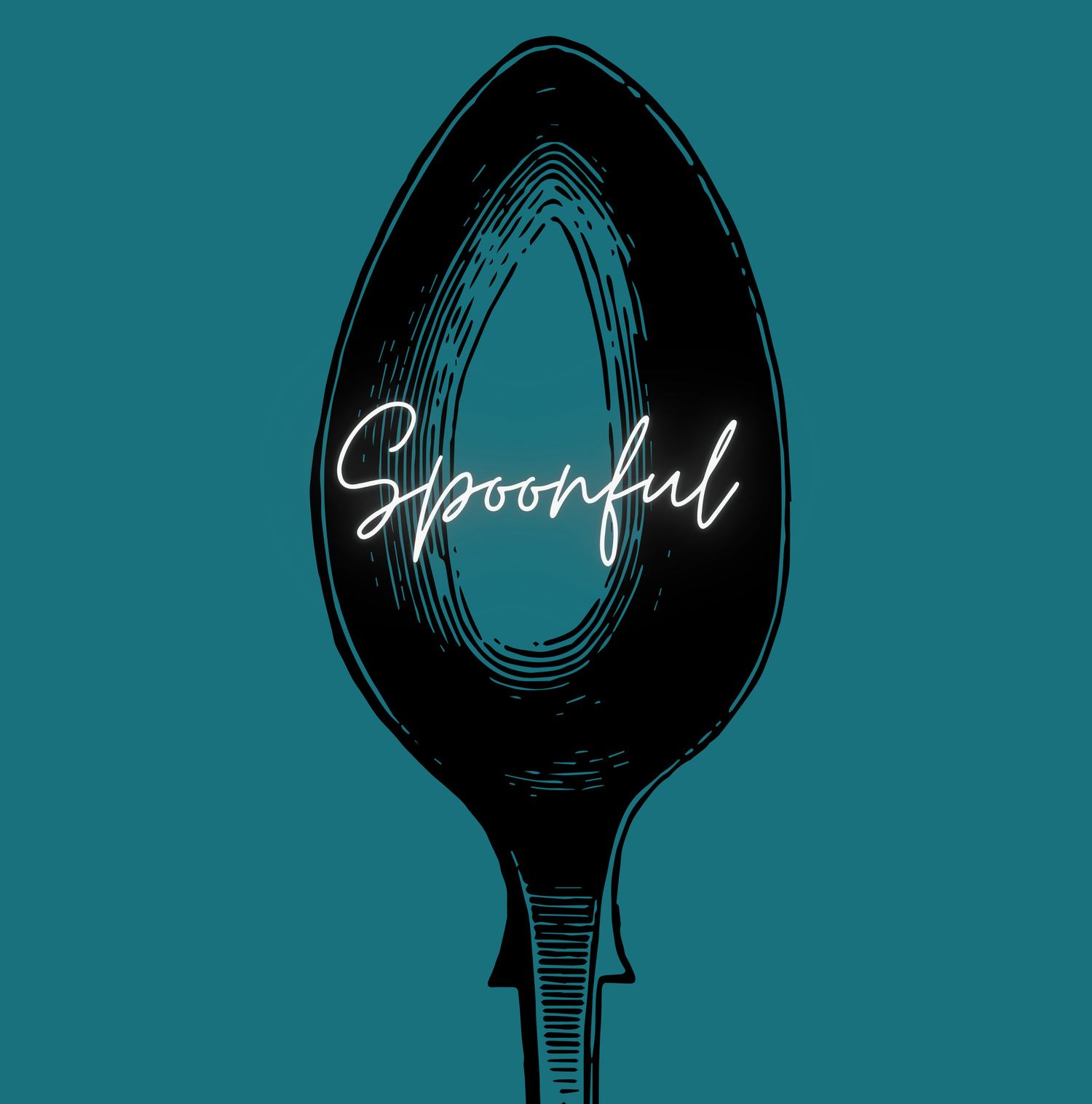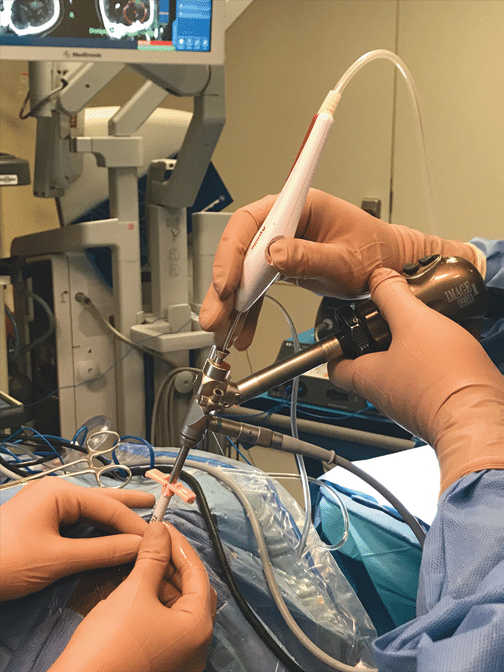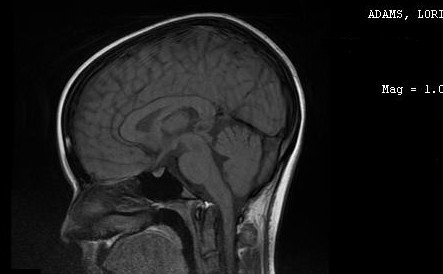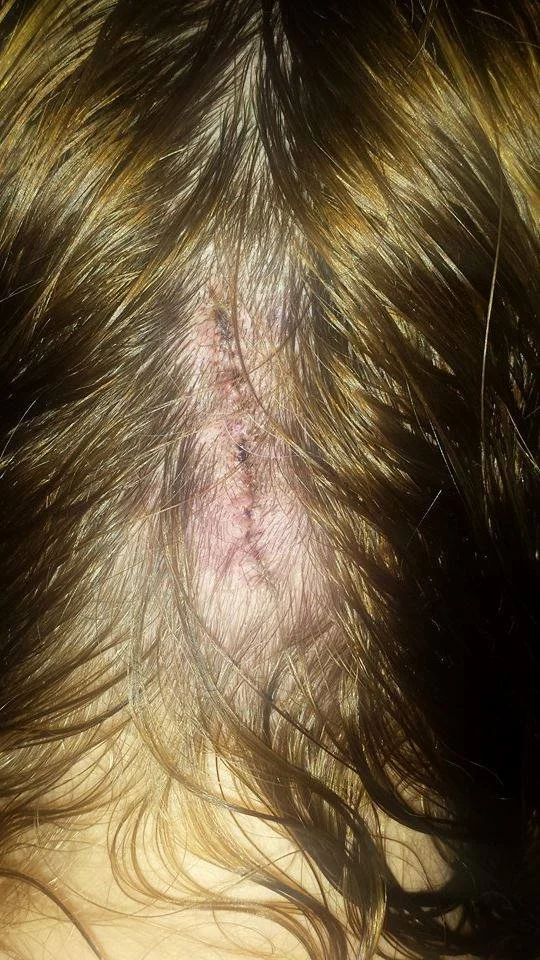The Keyhole Craniotomy
Minimally invasive craniotomy, endoscopic craniotomy, neuroendoscopic surgery
The thought of performing a brain surgery through a hole the size of a penny sounds like science fiction - but it's possible! This surgery offers a lot of benefits over the traditional "open craniotomy". This isn't suitable for everyone and every type of surgery, but is a groundbreaking surgical technique.
In a keyhole craniotomy, a collection of highly specialized equipment, including an endoscopic camera, are carefully thread through small incisions. These incisions may be inside the mouth, or holes drilled in the skull or even no incisions when done through the nose! These depend on the location of the area to be worked on. The neurosurgeon is able to see a live feed from the camera and works with the tools attached to the instrument holding the camera. From there, the neurosurgeon can perform operations such as the repair of blood vessels, and removal of small tumors - including skull base tumors.
Benefits
The brain is a very delicate and complex organ, and because this doesn't disturb a lot of healthy tissues, it offers a lot of benefits.
These include:
Shorter recovery time
Smaller incisions or none with endonasal (through the nose) surgery
Less pain after surgery, lowering the need for narcotics
Shorter hospitalization (1 or 2 days)
Return to normal activities
Risks
Besides the general risks that any surgery carries, there are some additional risks associated with a keyhole craniotomy. Many of these surgeries are performed with the patient sitting upright - the "barbershop" position. This position helps keep the cerebellum and other structures out of the way of the surgical instrument, but has an elevated risk of cardiac issues and blood pressure drops. Prior to surgery, the neurosurgeon will check the patient's heart to see if it's healthy enough for this type of surgery.
My Surgery
MRI scan from December 2015
After I determined that I wanted to have a minimally invasive craniotomy, I researched doctors in the United States that performed skull base surgeries endoscopically. I eventually found Dr. Mike (not the YouTuber), who has impressive credentials.
Once it was determined that the lesion could be removed endoscopically, I had an MRI scan, blood tests, and an echocardiogram (ultrasound of the heart). The MRI allowed him to map out the path that he would take with the endoscope. I had an MRI scan the previous month (December 2015) but it's important to have the scan done close to the time of surgery, just in case something changed.
The blood tests were a complete blood count and a blood type panel. These are fairly common prior to surgery to check for abnormalities that could indicate a current infection, get a general idea of the health of the patient, and also to make sure that the correct type of blood is available if a blood transfusion is needed.
The echocardiogram checks the health of the heart and the surrounding blood vessels. This can find any abnormalities of the heart walls, valves, or blood vessels, such as a hole, that would make a keyhole craniotomy too risky. An ultrasound tech visualizes the heart and can also highlight blood flowing through the heart to indicate if the blood is oxygenated or not.
My preoperative tests were great, so I was scheduled for January 29, 2016. The removal of the tumor itself was flawless. However, due to a combination of factors, I had a massive hemorrhage when a small vessel was clipped. Typically, the vessel is clipped and the blood loss is about 30mL. However, the neurosurgeon estimated it was 4L.
My surgery is by no means an example of what to expect with a keyhole craniotomy. My tumor had likely been slowly growing since birth and might have been preparing to rupture (there was a cystic portion) and created a lot of pressure inside my skull. This all culminated into the blood vessel bleeding like a garden hose with a thumb covering part of it.
Despite the issues that I went through, I still highly recommend a keyhole craniotomy, if possible. My surgical site healed rapidly and the hole in my skull filled in a few months. My scar is barely visible and hidden by my hair. I don't have a metal plate in my head that I have to worry about and only a tiny amount of my hair had to be shaved.
My surgical scar in the summer of 2016
It's an innovative surgical technique that could benefit many and may someday be default method for the removal of small tumors!





